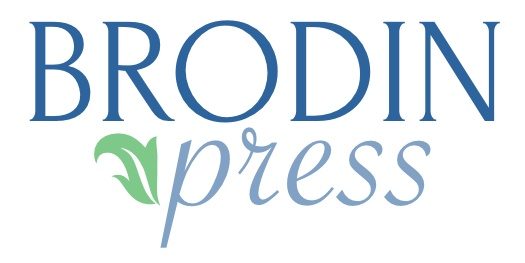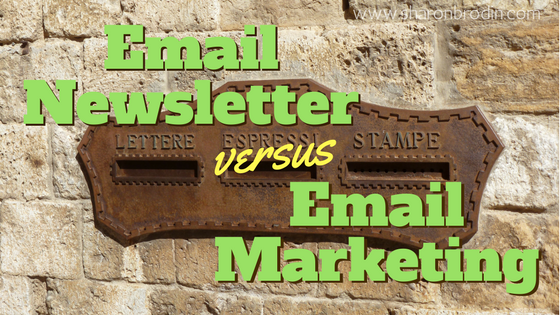
Email is roughly 40% more effective for sales than social media, using your own in-house email list.
But all emails are not the same—at least they shouldn’t be. Let’s take a look at two very different types of emails and how to use both in your marketing…
An email newsletter (or e-newsletter) falls under the category of email marketing, yes. But I like to separate the two. Here’s why:
Your Email Newsletter is about Relationship
I look at an email newsletter as more about relationship building than selling.
A good email newsletter is a combination of the following:
- It’s personal, even though it’s going out to more than one person, sometimes thousands. The tone is personal, and it often tells personal stories. Using the recipient’s name (like in this newsletter) makes it even more personal.
- It’s helpful, useful, valuable or entertaining. In other words—your readers want to read it because it’s giving them something they want or need. Not just a sales pitch.
- It’s regular. There’s a publishing schedule—once a week, every other week, once a month. It’s on a predictable schedule.
- It CAN sell, in small doses. But it doesn’t just sell—it teaches or helps somehow. The 80/20 rule works here: Give 80% of the time, ask 20% of the time.
Email Marketing is about Persuasion
While an email newsletter is mainly about building and maintaining relationships with your readers, email marketing is mainly about selling your services or products to them.
Email marketing works best when you write a series of emails related to one another that are set up to send automatically at certain times. These are known as “drip campaigns.”
A campaign can be triggered manually by you or automatically by a reader’s action. For example:
- John Doe fills out your signup form to get your free bait piece (lead magnet).
- You have an email series already written that’s triggered by John filling out the form.
- The first email to John thanks him for his request and gives him instructions on how to get the free offer.
- Then an email series is automatically sent on a pre-set schedule telling John more about the subject of the bait piece, answering some common questions he may have, and telling him how your products or services will help him solve his problems.
- There will be a straight-out sales pitch for a paid offer, at least part-way through the campaign if not from the beginning.
- If he doesn’t buy right away, you’ll be keeping in touch with him anyway with your email newsletter. You’ll have another chance to make an offer to him down the road.
Why Both are Effective for Your Marketing Strategy
The email newsletter is to keep in touch and to capitalize on the know-like-trust factor.
Email marketing campaigns offer your services or products directly to those who have come to know you through your newsletter.
Can You Combine Them?
Sure. Package your sales emails in content that also offers high value. Let me give you an example…
I subscribe to an email newsletter called B2B Writing Success. The newsletter always starts with a 200ish-word intro by the editor (complete with “Dear Sharon” and “Regards, Heather R, etc.”).
In the intro, she’ll describe a great way to market my business to B2B prospects. Something practical I can use right away. Then she’ll link to several related posts on the website. And in most issues, there will be an offer for an online course related to the content in the intro.
Generous with helpful information. A short and sweet offer that will benefit my business.
I always read it because the information in the intro letter is always helpful. I usually don’t respond to the offer…but every once in awhile I do!
Should You Keep them Separate?
Maybe.
It depends on your audience. The higher the price and greater the risk for your readers to buy from you, the more contact you’ll need with them before they’ll become customers or repeat customers.
In that case, educational content separate from persuasive selling may be most effective.
The lower the price tag and the less risk, the easier it’ll be to attract them as paying customers without the need to continually build rapport. Then, combined emails may do the trick.
Experiment and keep track of the results. Your eventual goal is to send the least number of emails—whether newsletters or sales—for the best return.
When used strategically, email newsletters and email marketing are both powerful tools in your marketing toolbox.

